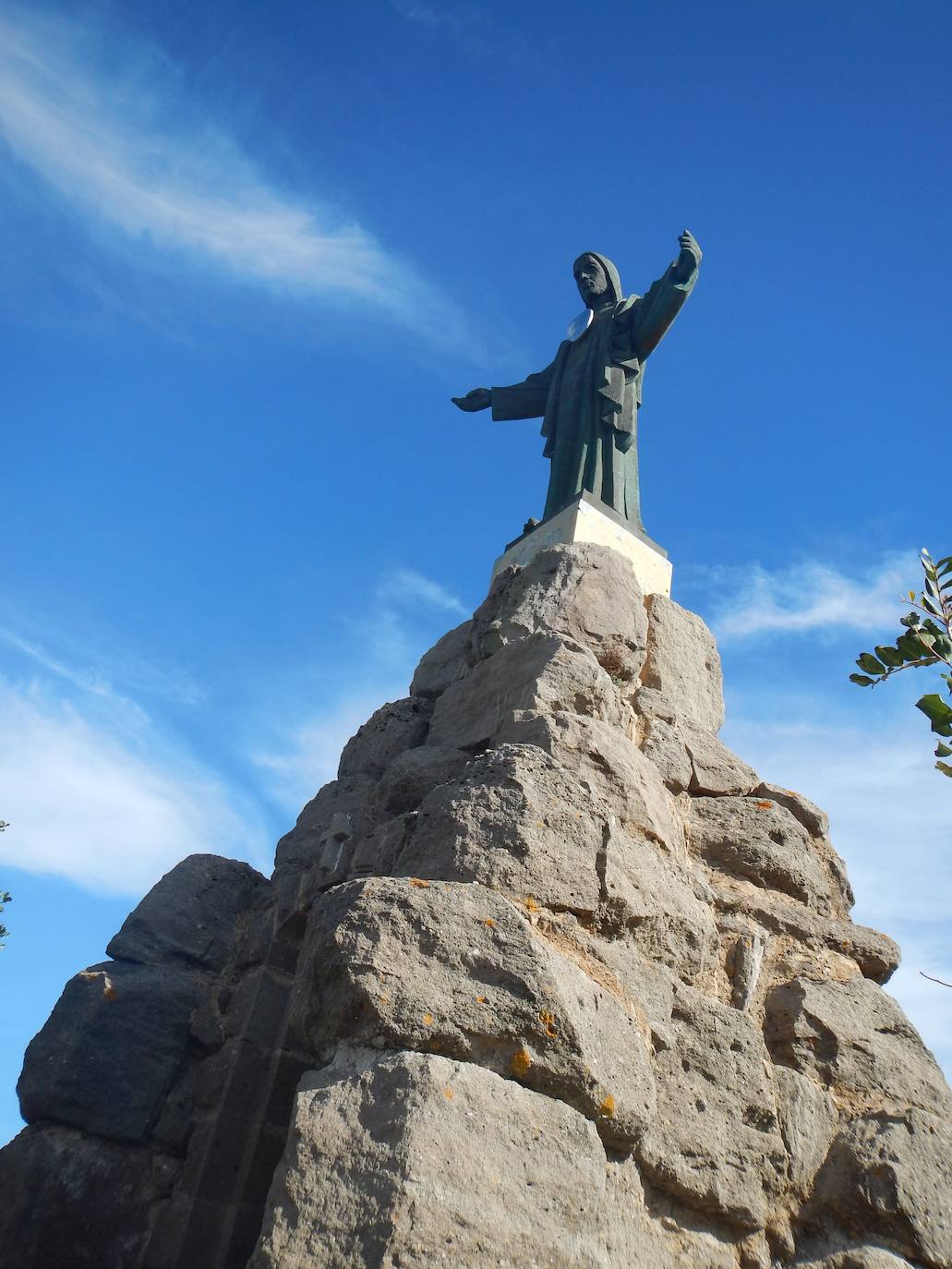

Sections
Highlight

JAVIER ALMELLONES
Friday, 28 July 2023, 17:55
The Santo de Pizarra, a statue of Christ of the Sacred Heart standing on a hilltop near the town, is one of the icons of the Guadalhorce Valley. Beyond its religious significance, the sculpture has an unusual history, which started with an idea from Father Arnáiz.
This Jesuit priest, a native of Valladolid who was beatified in Malaga in 2018, was one of the two key figures in the installation of this image at the summit of Sierra de Gibralmora. The first Christ figure was inaugurated and blessed over a century ago, on 12 January 1921.
How to get there: This religious image can be reached by following a circular hiking trail that starts from the recreational area of Raja Ancha Alternatively, it is also possible to get as far as the shelter below the statue by motor vehicle.
What to see: Raja Ancha, Cueva Oscura or the hermitage of Fuensanta There are also recreational areas in the vicinity, such as Gibralmora (near the religious image) or Raja Ancha, where visitors can enjoy leisure activities.
Where to eat: La Algarbía is a gastrobar located in the upper part of the town of Pizarra It offers a variety of culinary dishes and a cosy ambiance.
El Bodegón de Rafi is a local restaurant known for serving traditional cuisine It provides a range of dishes with a focus on local flavours and recipes.
Father Arnáiz's religious order especially advocated the cult of the Sacred Heart of Jesus. However, the involvement of the Count of Puerto Hermoso, Fernando Soto Aguilar, who was a personal friend of Arnáiz, was also decisive.
In 1920, this aristocrat, who lived in Jerez but who had a second residence in Pizarra, had a bronze and cast iron image built, about two and a half metres high, to be installed at the top of the Sierra de Gibralmora, where until then there had been a wooden cross.
This original statue of Christ of the Sacred Heart (Sagrado Corazón de Jesús) was created by Francisco Hernández-Rubio.
However, in February 1936, when the Popular Front won the elections a few months before the outbreak of the Civil War, the sculpture was torn from its base by a group of communists from Pizarra and thrown down the steep mountainside. The statue broke into pieces and some of the locals kept parts of it in their homes.
After the Civil War, in 1940 a wooden cross was placed where the image had once stood, leaving the mountain as it had been before Father Arnáiz had had his original idea for the sculpture. Some pieces of the original Christ, however, were placed at the base of the cross.
It was left like this until December 1994, when the people of Pizarra joined forces to replace their Christ of the Sacred Heart.
It was on 27 February 1995 when an even larger sculpture than the one installed a century ago was erected on a stone base.
The new sculpture which, unlike the previous one, has arms outstretched, is 3.5 metres high and is made of polyester resin with a bronze powder coating, is reinforced with fibreglass mesh and a stainless steel frame. Jaén sculptor Miguel Fuentes del Olmo was commissioned to do the work.
Today the statue has become a well-known symbol, not only of the town but also the whole district. It is not surprising that, despite the differences in size, people soon noted the similarities with the famous Christ the Redeemer of Rio de Janeiro. In fact the Pizarra sculpture has become known as the local Corcovado, after the mountain on which the Brazilian giant stands.
Publicidad
Publicidad
Publicidad
Publicidad
Esta funcionalidad es exclusiva para registrados.
Reporta un error en esta noticia

Debido a un error no hemos podido dar de alta tu suscripción.
Por favor, ponte en contacto con Atención al Cliente.

¡Bienvenido a SURINENGLISH!

Tu suscripción con Google se ha realizado correctamente, pero ya tenías otra suscripción activa en SURINENGLISH.
Déjanos tus datos y nos pondremos en contacto contigo para analizar tu caso

¡Tu suscripción con Google se ha realizado correctamente!
La compra se ha asociado al siguiente email
Comentar es una ventaja exclusiva para registrados
¿Ya eres registrado?
Inicia sesiónNecesitas ser suscriptor para poder votar.